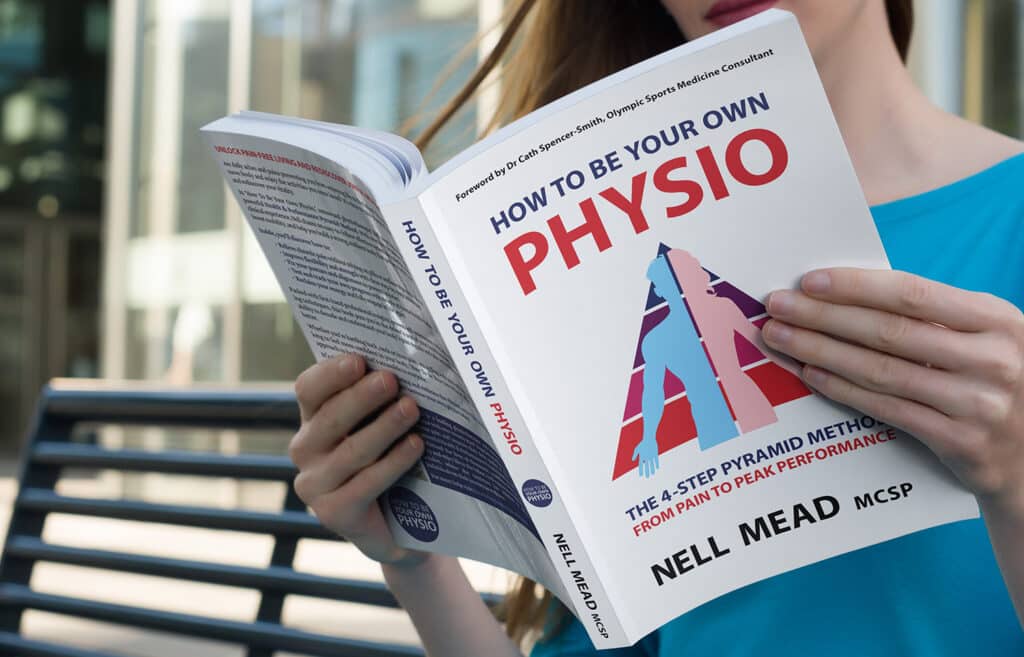In October 2022, I was playing a routine tennis match when my knee went *crunch*. This is part 3 of the story. You can read about the injury here, and about the diagnosis and plan here.
Preparing for surgery
Once I had a diagnosis (femoral chondral defect), an operation (nano drilling) and a surgery date (6 March 2023) I could start planning. I informed my patients so that they could make plans for while I wasn’t available (which could mean more comprehensive exercises to practise in my absence, or temporary referrals to other trusted physios), and I informed my admin team that I wasn’t going to be able to take on any more new patients until May (which is when I’ll be off crutches and hopefully feeling more able to get up and down off the floor to do proper assessments). I also informed my tennis coach, who is convinced that I’ll be back on court soon, albeit sitting on a chair like Thomas Muster!
But I live on my own, in a house with stairs, and I have a dog. How am I going to manage?
Preparing my equipment
Well, the first thing is to plan my shopping list (full disclosure, some of these links are Amazon affiliate links so if you buy anything using these links, it won’t cost you any more but Amazon will send me a few pence – and while I’m not working, every little helps!)
- If I’m going to be on crutches for 6 weeks, I want decent ones that aren’t going to completely ruin my arms. I found a pair of Flexyfoot crutches at the amazingly-named Granny Gets a Grip, which are more stable than standard crutches and are spring loaded so they take a bit of the strain, though I do think they’re quite heavy, and I think they’d be too long for anyone under about 5’4” tall. I’ve also got some weight lifting gloves to cushion and protect my hands.
- If I’m going to be in bed then I’ll need propping up, so I’ve bought a comfortable batwing pillow and also a tray table so that I can use my laptop in bed – I don’t want to be sitting with my feet dangling as the post-op inflammation will pool in my feet and I’ll stiffen up.
- I will definitely need to shower, but it’s risky when you can only stand on one foot, so I’ve bought a shower stool and some suction handles to keep me safe.
- To keep the swelling to a minimum, I’ve got a Dr Graeme vibrating massage gun which I’ll be using to stimulate my lymphatic system.
- To keep my muscles active before the op (ie while I can weight bear!) I’m using a Reviber vibration platform and a Swiss ball; and then for afterwards when I can’t weight bear, I’ll be using a Compex muscle stimulator to keep my quads and glutes alive. I’ve also ordered an Occlusion Cuff which I’ll use later on in the rehab process.
Preparing my body
Then I need to get practising. I learned to use crutches (and to teach other people to use crutches!) as part of my physio training, but I haven’t taken more than a few steps for years. I am practising walking, stairs, getting in and out of chairs and the loo and off the bed and off the floor. I am using the Reviber for half an hour, 3-4 times per week to keep my muscles strong. Ian has told me I mustn’t do any tennis or running or squats (and in any case my knee is too grumpy); but I don’t want it getting weak. I’ve also booked a session with an old physio colleague who now works for Spurs, as I suspect he’ll be good at knees, to make sure that I’m not missing anything, prehab wise. Oh, and I’m trying to eat well, take on all the vitamins and minerals I can, drink plenty of water and get enough sleep, to optimise my tissue health. I’ll expand on this in the next post!
Preparing my friends
Finally, I’ll need help. I’ve co-opted lovely friends and family members to come and babysit me while I’m on crutches (luckily I have space for them to stay!) Their job will be to keep me fed (I can and will order groceries online, but getting to the front door and unpacking them is likely to be an issue), to call an ambulance if I tumble down the stairs, and to make sure my dog gets taken outside appropriately for a 16 year old whose arthritis isn’t a fan of long walks, but who likes to suddenly change direction and scamper across a pavement when she picks up an especially interesting scent (I call it checking her wee-mails). Being the poo fairy isn’t easy or safe on crutches!







